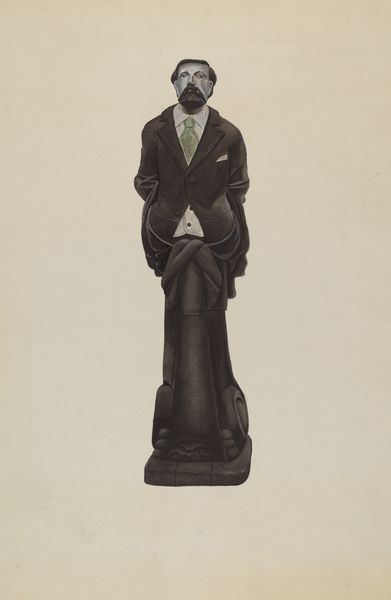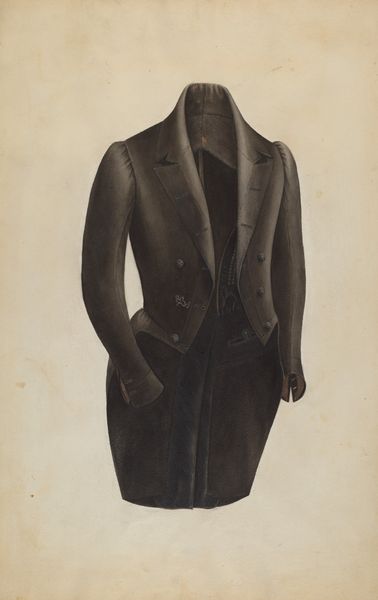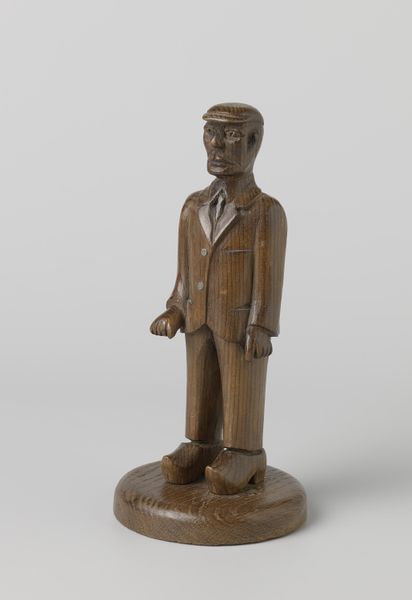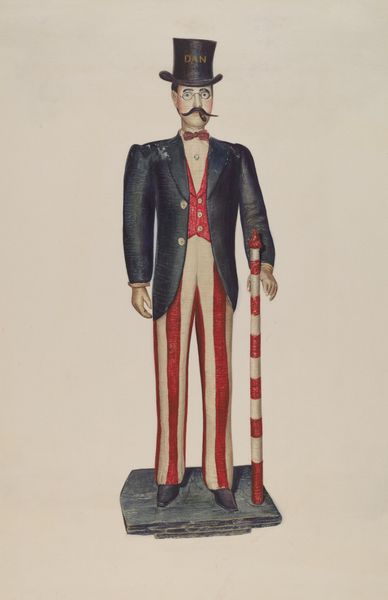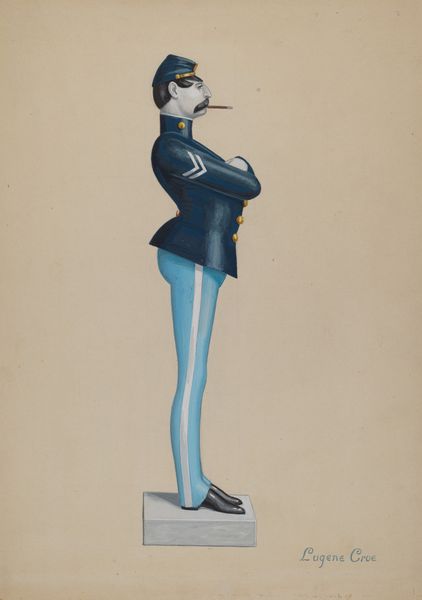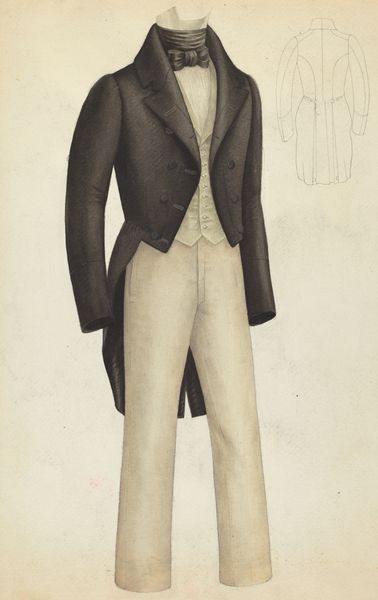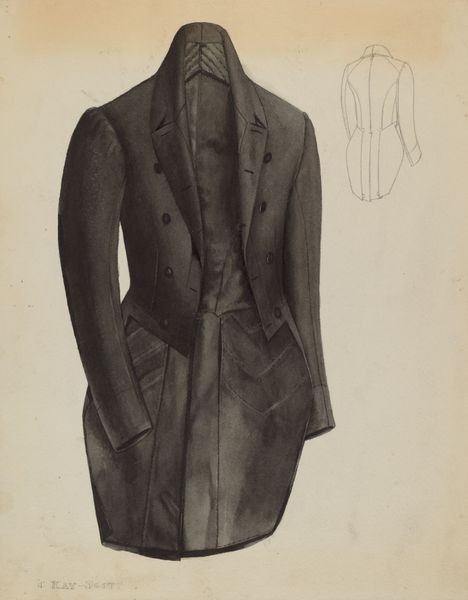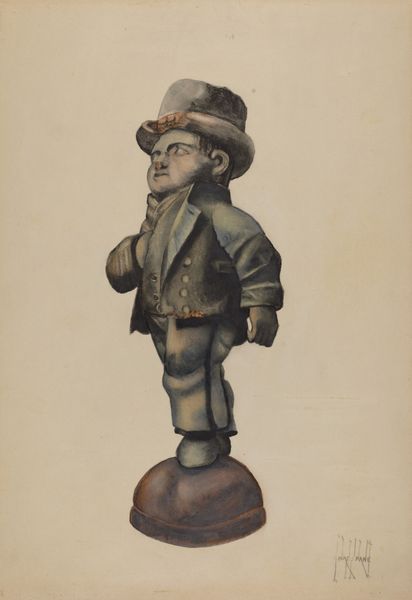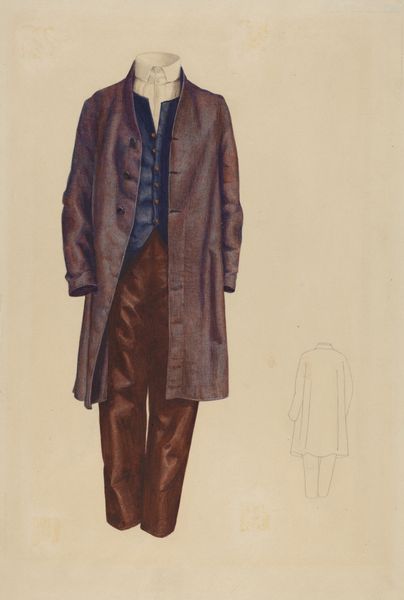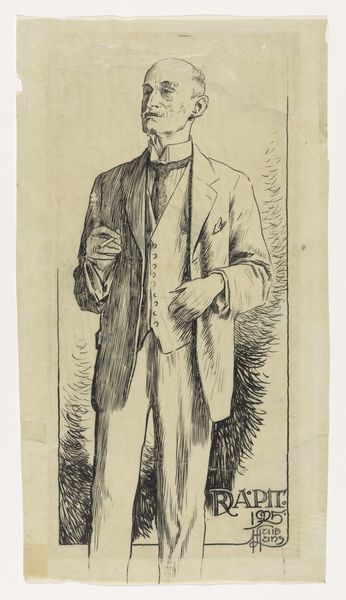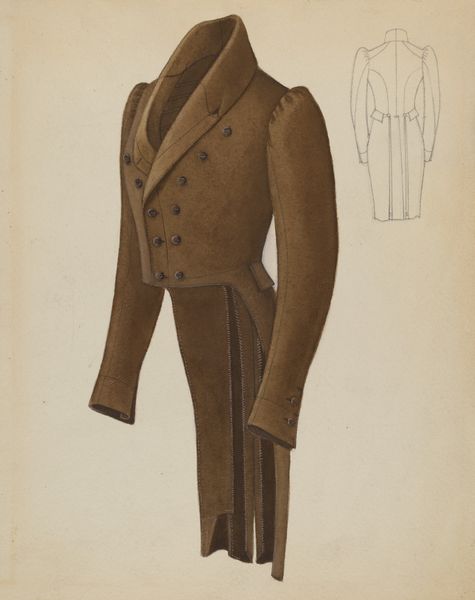
drawing, sculpture, wood
#
portrait
#
drawing
#
caricature
#
figuration
#
sculpture
#
wood
#
portrait drawing
#
academic-art
Copyright: National Gallery of Art: CC0 1.0
Editor: This is "Carved Figure (Possibly a Tailor's Shop Sign)" from around 1937 by Frank McEntee, made of wood. The figure's stance is so stiff, it almost feels like a caricature, but with an element of suppressed sadness. What’s your interpretation of this work? Curator: It’s intriguing, isn’t it? This piece invites us to consider the intersections of labor, representation, and social identity in the pre-war era. The figure's rigid posture, coupled with the assumed profession, reflects a certain class consciousness, I think. He's "dressed up" but there's no movement or flexibility; it’s all surface, all display. How does this reading resonate with your initial impression? Editor: That’s fascinating. I was focused on the individual's expression, but viewing it as a commentary on class changes my perception. The almost cartoonish portrayal could be interpreted as a subtle critique of the tailor’s aspirations, trapped, maybe, by societal constraints? Curator: Exactly! And consider this: How does the commercial purpose of this object - possibly a shop sign - impact its artistic value? What does it say about the boundaries between 'high' and 'low' art? Perhaps this ‘craft object’ attempts to mimic and challenge ‘high’ portraiture? Editor: That’s a great question, I never would have thought of this portrait that way, considering artistic value in this social and economical context, that's enriching. Curator: Agreed, by situating it within historical power structures, we unveil not just the artist’s intention, but the cultural anxieties of the period. Editor: It is an interesting dialogue about the nuances that form art creation, purpose, and audience.
Comments
No comments
Be the first to comment and join the conversation on the ultimate creative platform.

